For most animal lovers, the million-dollar question is- What does their pet see? We all know that pets have a different vision than humans. Home Advisor created a project to illustrate the same. The project helps you look at the world from an animal’s point of view.
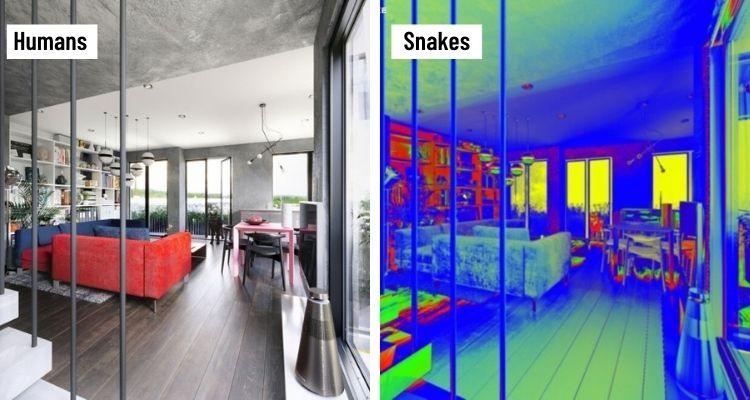
How did they achieve this? They created a digital room and placed different animals around it. After that, based on academic research, they edited pictures of animal’s sight.
The results were so interesting, you’d want to squeal!
What humans see

What dogs see
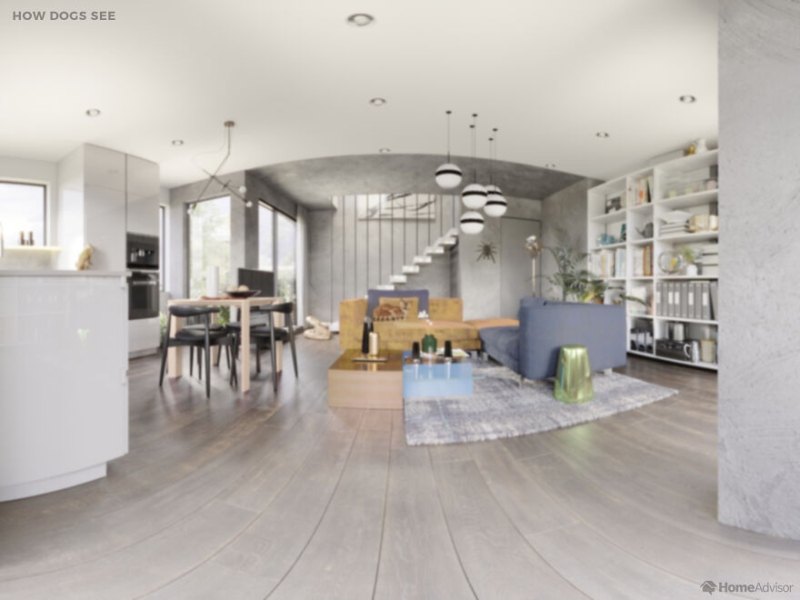
This is how dogs view this room! Whatever bright colors you may add to your decor, your dog is only going to see a toned-down, pastel-hued version of it. Dogs see muted combinations of the colors filtered by their two-cone eyes: blue and yellow.
“Whilst we were armed with the latest scientific findings, no one has ever viewed the world from an animal’s point of view. So, sometimes the garish colors made us second-guess whether an animal really did view the world in such a way, but after rereading all the findings, we were confident with the results. The hardest to portray was the chameleon, as visualizing a 342-degree view whilst taking into consideration the ultraviolet spectrum was tough to explain to the designer, but the final result highlights just how amazing their field of vision is,” shared Lee McCullagh from the team of Home Advisor.
What humans see

What cats see

Thanks to their excellent night-vision, unlike humans who have cones in their retinas, cats have lots of rods – a different type of photoreceptor cell, sensitive to low light. This means cats have a wider field of view, 200 degrees versus 180 degrees for humans. They also see blues and yellows with a bit of green as a bonus.
What humans see

What goldfish sees
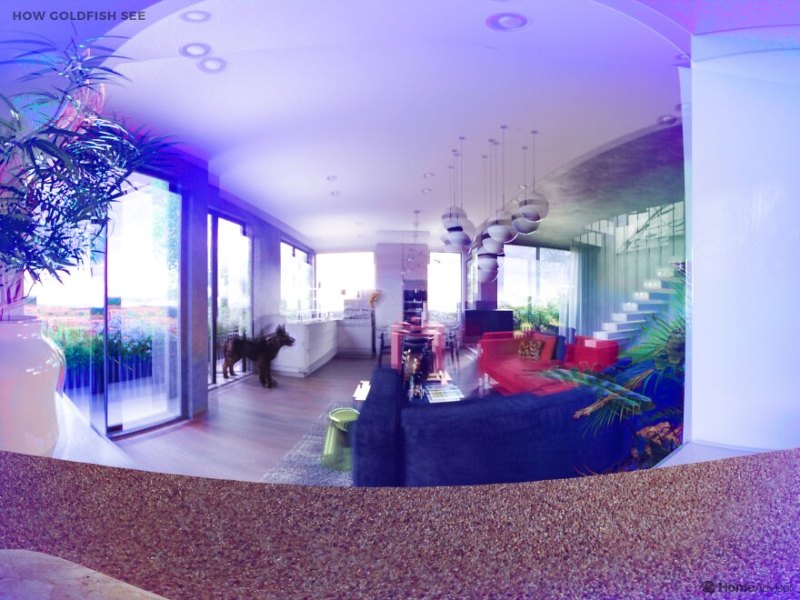
Goldfish have the ability to see UV light, to help them sustain themselves in water. That means, your goldfish can see a lot more colors than you. They also have a fisheye lens, helping them enjoy an almost 360-degree canvas.
What humans see
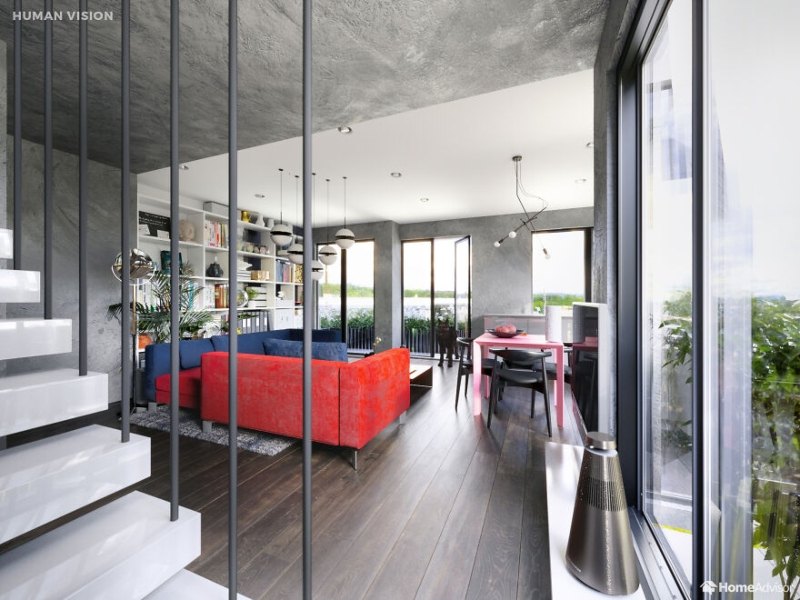
What snakes see
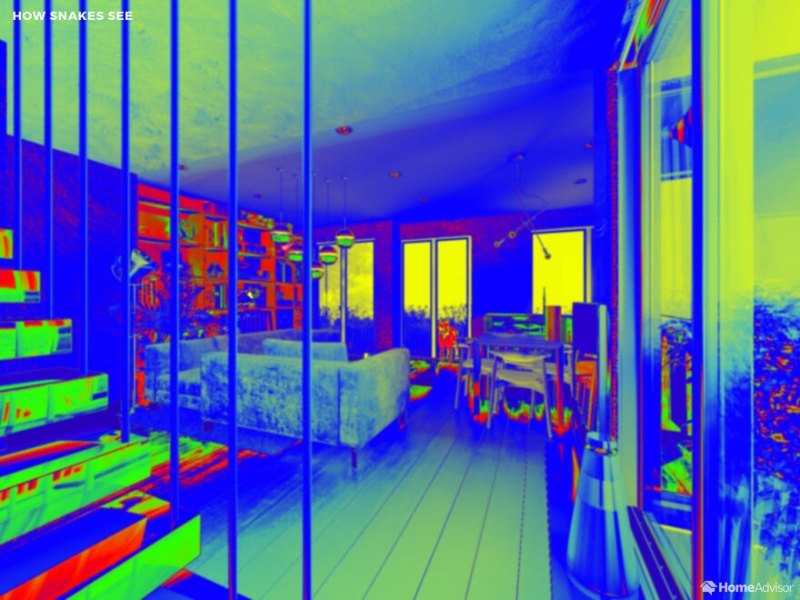
Snakes have a very poor vision in the daylight, but their night-time vision isn’t too shabby. However, some snake species are gifted with infrared vision, which enables them to combine heat-detection data with visual data to create an image that looks something like thermal imaging.
What humans see
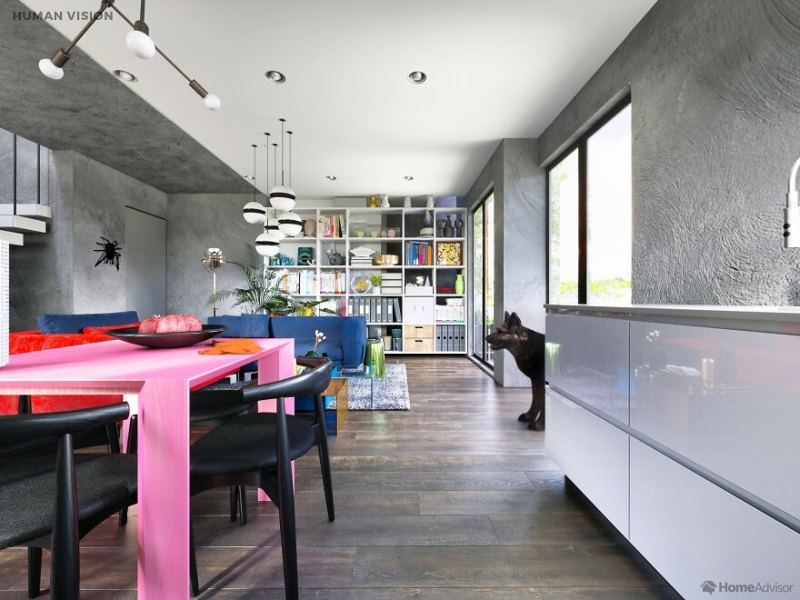
What chameleons see
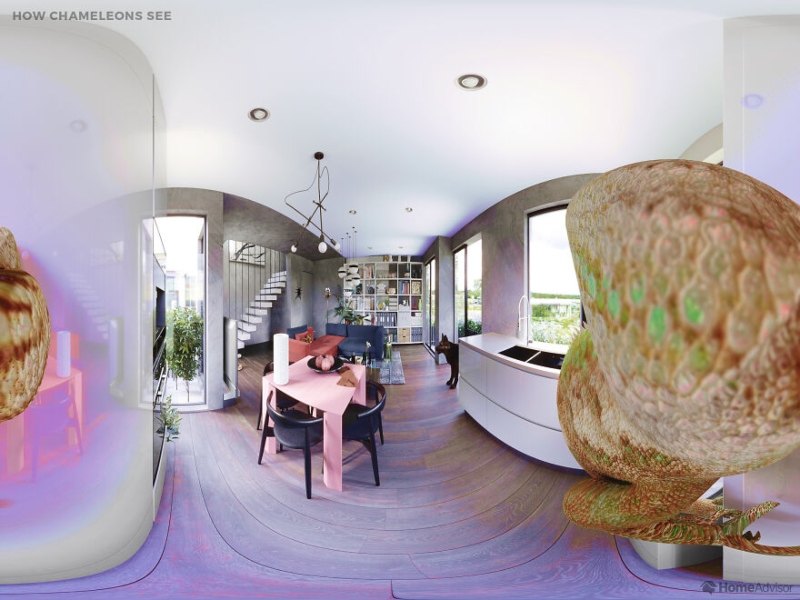
Pet chameleons will be the real admirers of your decor, as they can absorb, transform, and re-emit colors, and see a lot of colours, along with the UV light.
They enjoy a total field of vision of 342 degrees and also have a blind spot of 18 degrees just behind their head, so think twice before you plan to creep up to them from behind!
What humans see

What spiders see
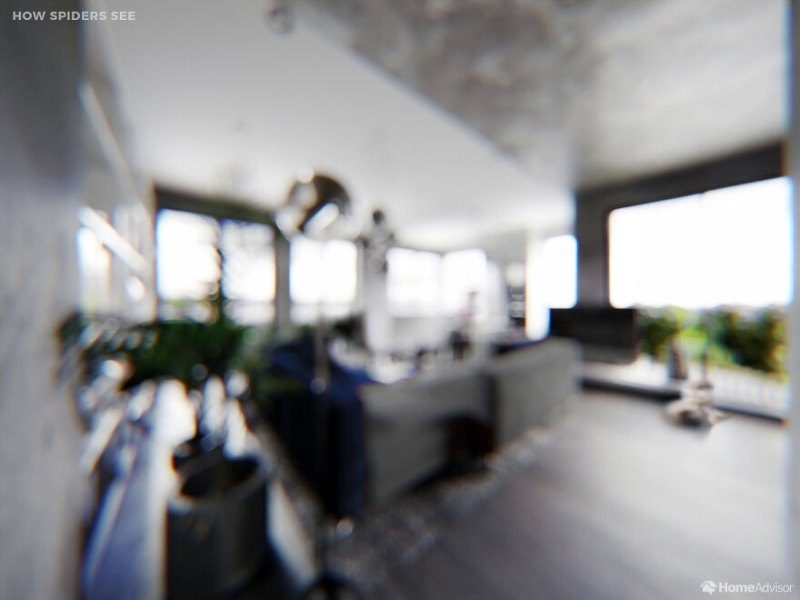
Did you know that most spiders have eight eyes? However, their eyesight is quite feeble and they rely largely on the hair on their legs, touch, or vibrations to feel things around They do, however, have color-sensing structures of opsins (a type of protein) that might make them sensitive to color, and might be used to find mates.
So next time you get scared of a tarantula, think again, here’s what he sees!
What humans see

What parrots see

Parrots have quite a colourful world. They can see UV, blue, green, and red color ranges. In fact, the ‘violet’ color in this picture has been used to double for ultraviolet, which is actually colorless and invisible to humans.
They also have a monocular vision, meaning one eye focusses on one thing, while the other wanders.
Which other animal would you like to see the world from the eyes of? Let us know in the comments below!
Image Credits: Home Advisor



